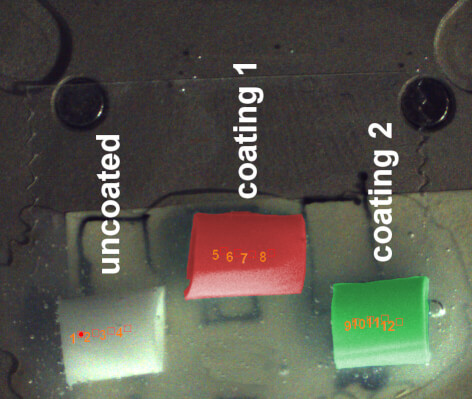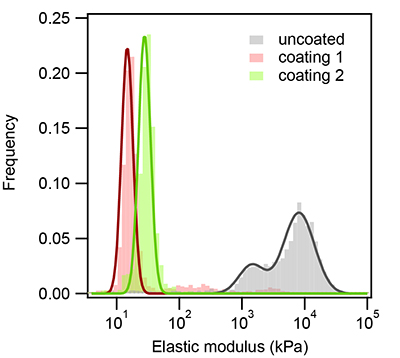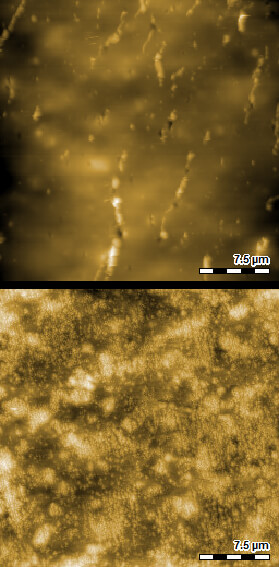Many medical devices consist of or include tubings, e.g. catheters, injection or infusion sets or urological retrieval devides. The surfaces of these medical tubings need to be tailored for the specific applications. Functional requirements such as imporved anti-fouling properties, reduced blood coagulation or imporved lubrication and wettability can be served by polymeric coatings. Additionally, they can provide mechanical properties that are similar to the generally soft biological tissue environment. Mechanical testing at the nanoscale provides valuable information about the properties of polymeric coatings that are required for suface design and optimization.
Here, the Nanosurf Flex-ANA system was used to investigate the mechanical properties of three different medical tubings in a single run. While one of the tubings was uncoated, the other two tubings were bearing different polymeric coatings.
View or download application note as PDF

The overview image of the sample shows the three pieces of tubing overlayed with the locations at which the system will automatically perform the mechanical testing experiments (numbered 1-12).

Elastic modulus recorded on the different medical tubings. The polymeric coatings confer elastic moduli to the tubing surfaces that are orders of magnitude below the uncoated tubing. This softness is comparable to that found in soft biological tissue.
The histogram shows the pooled results of at least three different areas probed on each tubing. Samples were equillibrated and immersed in PBS buffer for nanomechanical measurements using a Nanosensors PPP-ContSCAuD cantilever.

The Flex-ANA system retains its the full research AFM capabilities that allow recording e.g. the sample topography and thus measuring the sample roughness. The top AFM topography corresponds to a coated tubing, while the bottom AFM topography was recorded on an uncoated tubing. The sample roughness is clearly influenced by the coating. Further, the coating also influences the friction of the surface (not shown, please refer to the application note PFD)
AFM images were recorded in dynamic mode with the samples immersed in PBS buffer. Images were processed using the Nanosurf Report Software.
Apart from medical tubings in modern medical treatments of diseases and other medical conditions a wide variety of devices and synthetic materials get into contact with (parts of) the body. Such devices include stents, vascular grafts, renal dialyzers, prostheses and a large number of other implants. Depending on the application, the surfaces of such devices that interact with biological material must also fulfill different requirements. For implants that should reside inside the body for a long time, surfaces and surface coatings must be tailored to improve biocompatibility and thus e.g. reduce foreign body response or unwanted blood coagulation. Again, mechanical surface properties are a key parameter for biocompatibility.
The ANA software was partly developed within the framework of the OYSTER project, which has received funding from the European Union’s Horizon 2020 research and innovation program under grant agreement No 760827.

Nanosurf application note AN00811

